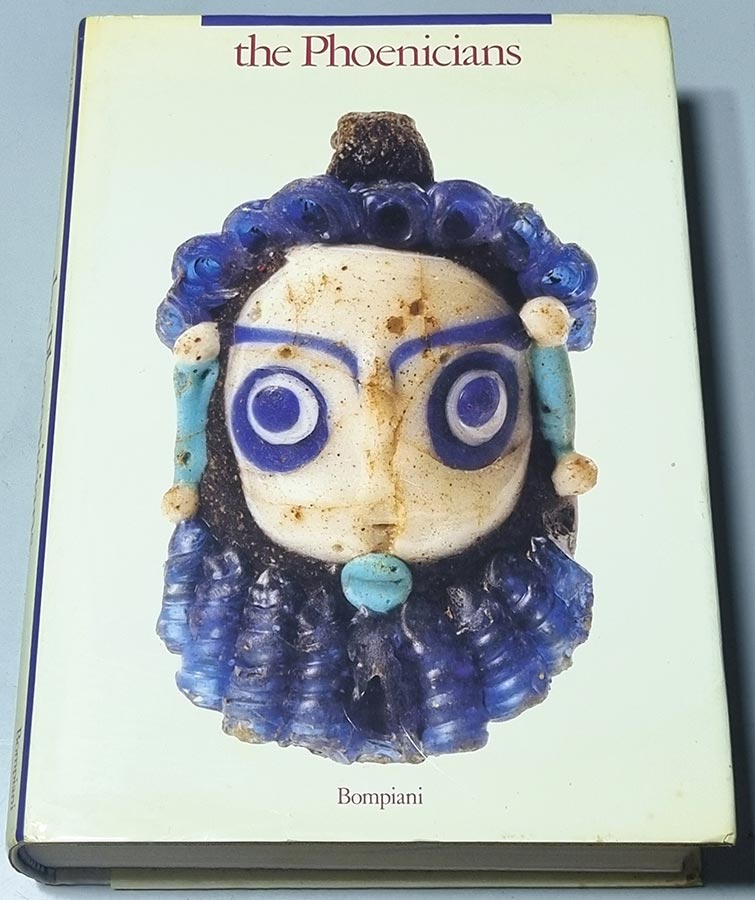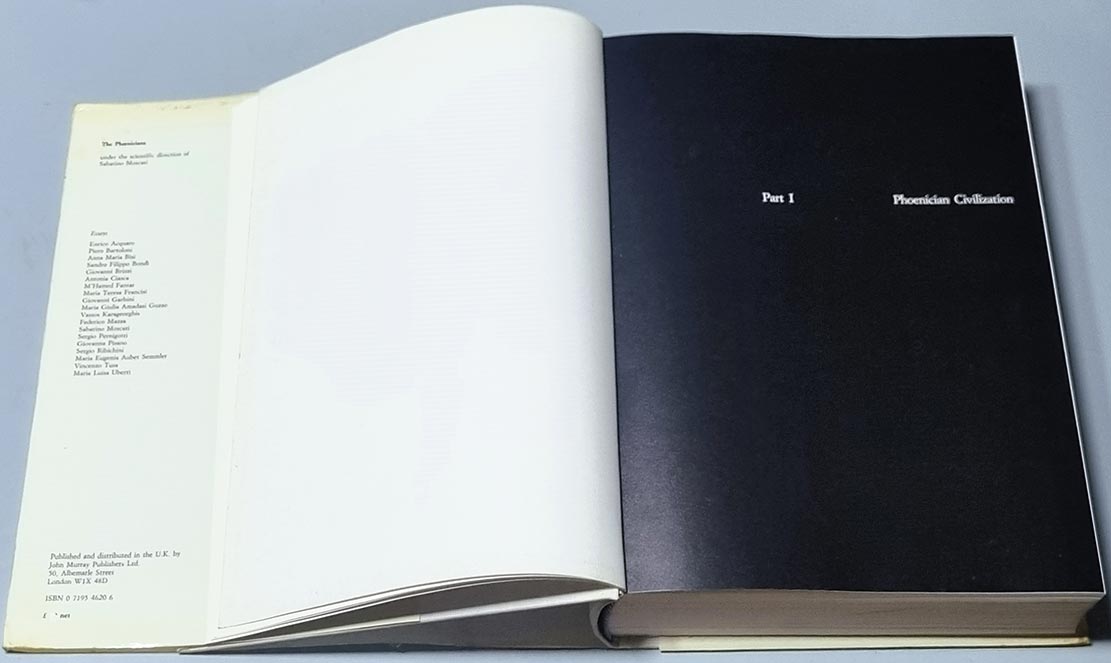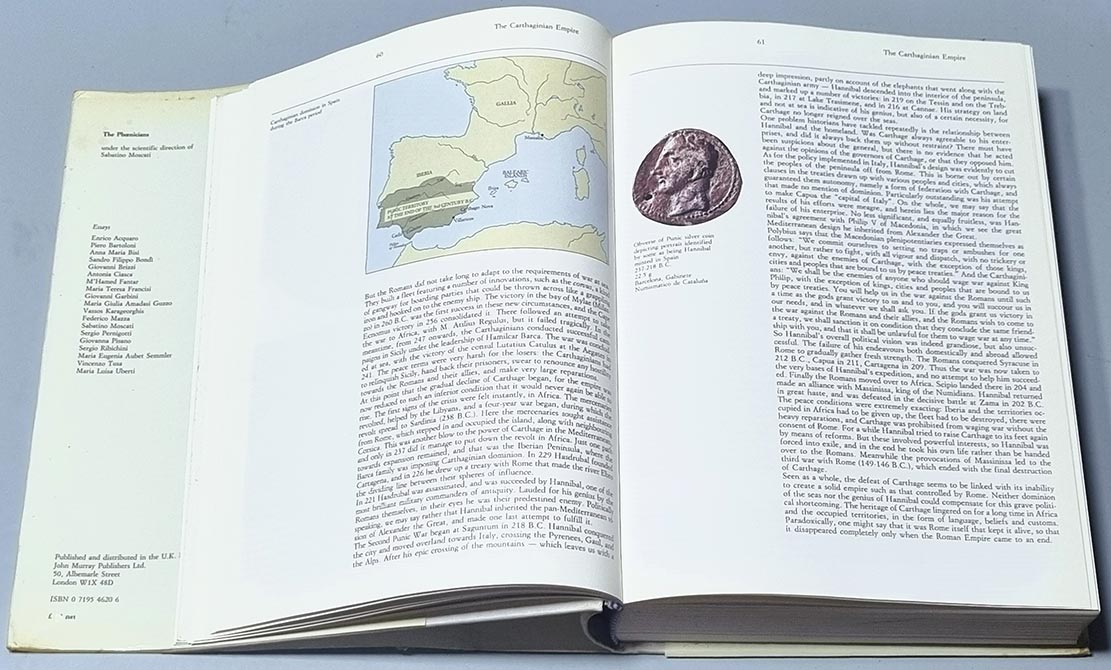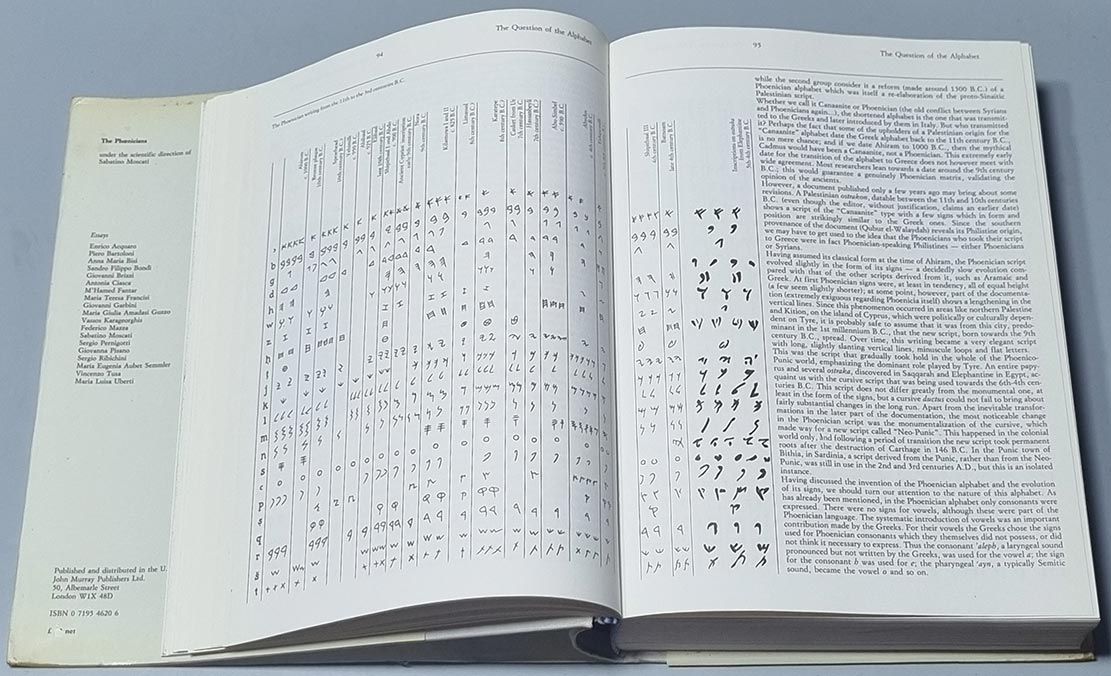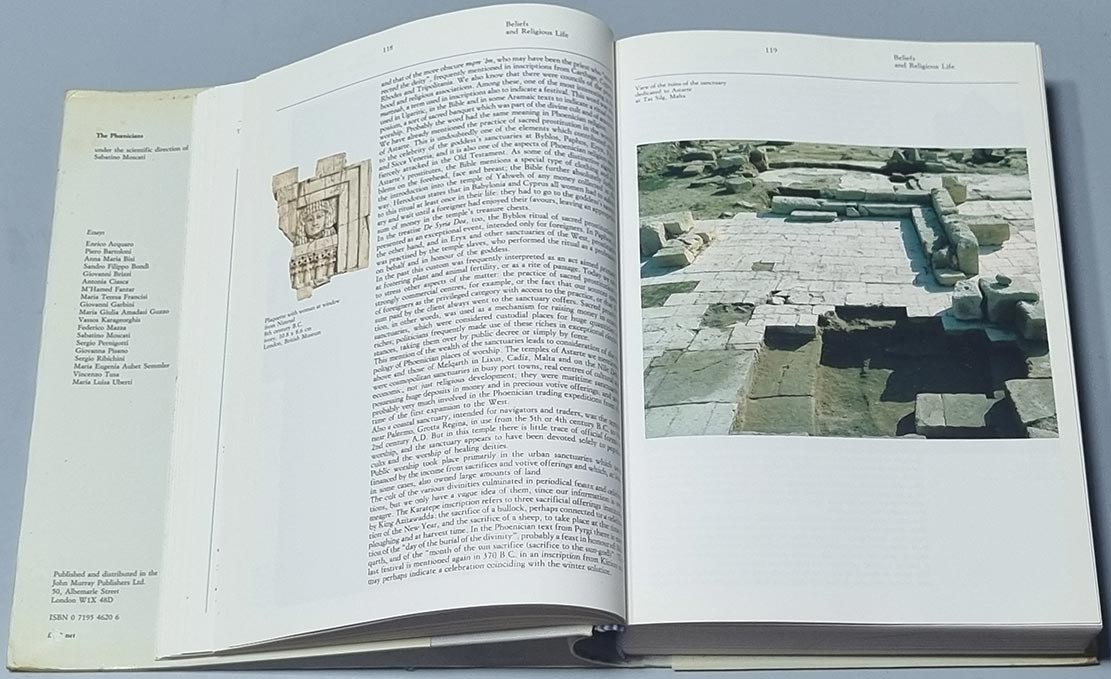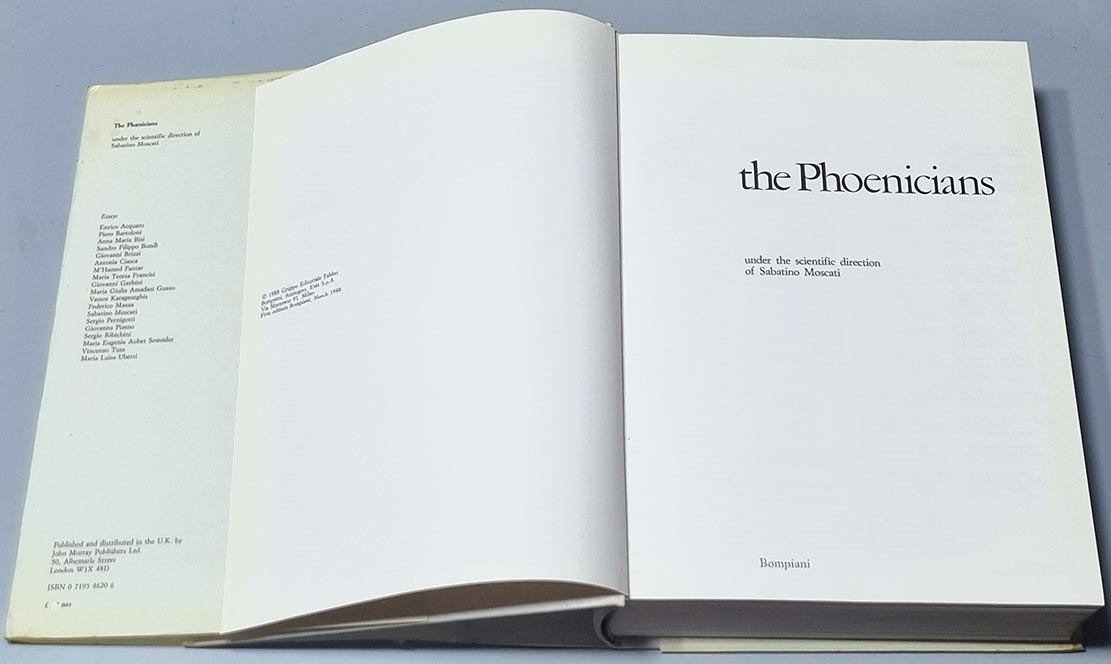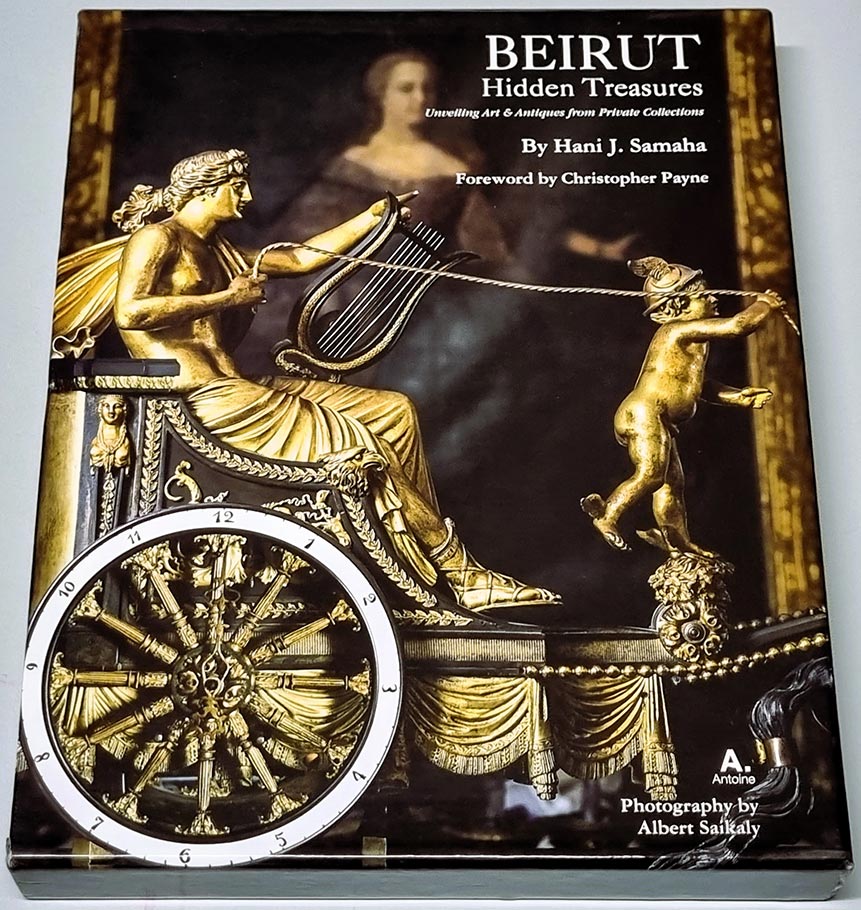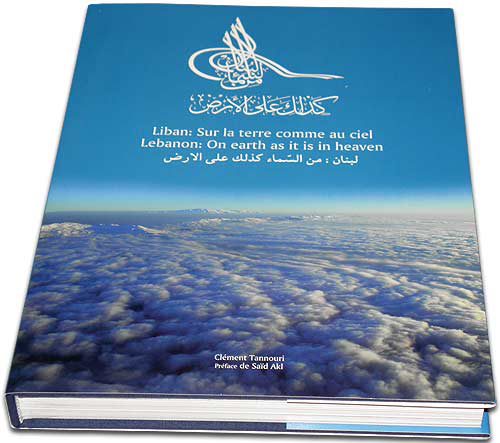The Phoenicians under the scientific direction of Sabatino Moscati
The Phoenicians – Sabatino Moscati
$94.00
Out of stock
Out of stock
Description
LebanonPostcard presents the book: The Phoenicians under the scientific direction of Sabatino Moscati by Bompiani
Hardcover book with protector, 30.5×22.5 cm, 769 pages, 1988 (Used but still like new)
Following the major exhibitions devoted to Futurism and Arcimboldo, Palazzo Grassi has now shifted its focus of attention to present to the broad public an exhibition dedicated to the Phoenicians, directed by Sabatino Moscati.
The scope of our interests has thus been widened, demonstrating that there are no bounds to the desire for knowledge that is behind the foundation of our association.
The choice of theme was not a random one: it reflects our wish to reward, so to speak, a research effort that for many years has been promoted and developed by Italian scientific institutes, offering to the eyes of all not only an exceptional series of objects, the fruit of a distant and highly developed civilization, and not only evidence supporting a thesis that was first intuited and then pursued with intelligence and love, but also the unbroken course of man’s striving towards beauty. Man, for as long as he has had consciousness of his own being, has expressed his spirituality through the beautiful; he has gradually enriched his life, his surroundings and his identity with the manifestation of his devotion to that which is noble, to that which clarifies and exalts every one of his actions.
From the objects of daily experience to those that define power and exalt, even after death, individual virtues, they all combine in a chorus that becomes a collective explication and, therefore, civilization.
But it is not our intention to present merely documentary evidence and with that carry out a work of diffusion and broadening of knowledge; we believe that reproposing the splendour of this distant civilization means a return to the continuity of a culture which is
deeply Mediterranean and for this reason always, and still today, ours.
In these men of the past, of whom we shall see here the traces, we can recognize ourselves: their way of life, their expressions, everything that we shall see and that we present in this exhibition is part of ourselves, and forces us, transcending the immediate visual impact, to turn our glances inwards; it forces us, if we want to understand what we see, to meditate and to reconsider our present values.
Certainly, civilization is progress. It is continual modification and permanent advancement; but we cannot act in the present without an awareness of our roots that penetrate deeply into the past.
The message that we entrust to this exhibition is precisely this: understand the past to be aware and responsible in the present.
Feliciano Benvenuto
It may be said that a general exhibition on the Phoenicians has never been organized before. Partial initiatives, focusing on single aspects or single regions, although praiseworthy, are certainly not enough to throw light on this great civilization. The continuously growing evidence from archaeological discoveries and new studies has revised our understanding of the Phoenicians.
Their culture has been rediscovered, its importance has become clear and now claims general attention. In these circumstances, Palazzo Grassi’s suggestion that I should plan and scientifically supervise an overall exhibition on the Phoenicians appeared to me as a stimulating project, although not without difficulties.
Two reasons in particular led me to accept the invitation gratefully. Firstly, knowing the great and well-deserved prestige acquired by Palazzo Grassi with art exhibitions, it was clear that archaeology would find the most advanced starting conditions there. Secondly, the invitation was an implicit recognition of the fact that a school of these studies has been promoted in Italy and has achieved internationally accepted leadership in the field, so this country might be considered a naturally qualified site for the exhibition (and in fact it has been considered so by our foreign colleagues).
From the start, one point was clear to me: our effort must not be to organize an exhibition on the Phoenicians, but rather the exhibition. That is, it had to provide the completest possible global overview of Phoenician civilization, in all the countries where it appeared, from East to West, and in all the periods when it flourished, from the first emergence of the “sea-faring” cities on the Levantine coasts to the destruction of Carthage. So there was no choice or preference between the Phoenicians of the East and those of the West, the Carthaginians on the contrary, our aim was to achieve a balanced integration so that the survey would be really total and organic.
The geographical subdivision of the Phoenician world is reflected in the exhibition and was the basis for its layout. However, before, during and after the geographical route we wanted to highlight certain essential achievements of Phoenician civilization, such as the sarcophagi, stelae and jewellery. We also wanted to establish thematic cross-links by considering a number of decisive inventions navigation techniques, the creation of the alphabet, of purple-dyed fabrics and glass manufacture. In the latter art the Phoenicians were significantly the precursors of the Venetians, and love for the sea and a determined will to explore unknown lands also bring Venice close to these great navigators of antiquity.
An overall exhibition does not mean an exhibition that includes everything indiscriminately. Apart from certain practical difficulties relating to a number of areas in the Mediterranean world (although we reduced the obstacles as far as possible), a selection has been made to provide the best exemplification, particularly since in some sectors (notably stelae, terracottas and coins) the documentation would have been superabundant and therefore distracting. Altogether, we tried to achieve a balanced presentation of material which is widely dispersed and uneven, but always evocative, always proof of the creative genius of an enigmatic and fascinating people.
In the case of the catalogue, we wanted it to be a presentation not only of the works exhibited, but also of the civilization that produced them. So we offer a wide survey of the Phoenician world and its various expressions of art and culture as they appear linked to the exhibits. The most qualified Italian and foreign scholars contributed to the catalogue, so it is not an ephemeral panorama of artifacts, interpretations and studies. And there are questions that stimulate curiosity: is it true that the Phoenicians sacrificed children to their gods? or that they reached America in their ships? These and other queries are answered as far as possible.
In both the exhibition and the catalogue, particular attention has been paid to elements that link the Phoenicians to us. This explains the section on Orientalizing art, with the outstanding material from the Museo di Villa Giulia in Rome, and the space given to the history of the alphabet and other inventions still valid today. But it must be remembered that the Phoenicians are relevant to us not only in terms of continuity, but also as a comparison or even contrast. They are the “others” of ancient history, the vanquished rather than the victors. Without the events in which they met and clashed with our predecessors we would not be who we are today. This makes the fascination of rediscovery all the greater.
One more word about the “language” of the exhibition. Addressing a wide public, we tried to interest, involve and satisfy it in the best possible way. The design of the exhibition, entrusted to the skill of Gae Aulenti, is an attempt to avoid both banal popularization and an over-technical approach that would repel visitors. The language is intended to be clear, accessible and appealing.
But this will be judged by the visitor, and we apologize from the outset for anything we may not have succeeded in doing, or have done imperfectly. would like to recall that this is a pioneering effort, with all the risks implicit in such a case.
Concluding this presentation, I would like to renew my expression of gratitude to Palazzo Grassi for the honour and responsibility conferred on me. My heartfelt thanks go to all the directors of museums, in Italy and abroad, whose generosity made the exhibition possible. I am also grateful to all the scholars, Italian and foreign, who contributed to our effort. Finally, I wish to thank my former students, many of whom are my colleagues today, who agreed to meet again in this common undertaking. In a way it has been a return to our youth, to the long road we followed together along the path of the Phoenicians, the “path of the sun”.
Sabatino Moscati
LebanonPostcard will be responsible for sending the book you order, through a fast courier with a tracking number, guaranteeing reception of the package. The souvenirs may take three to five days to arrive, according to the country they are sent to.
Additional information
| Weight | 3.8 kg |
|---|


